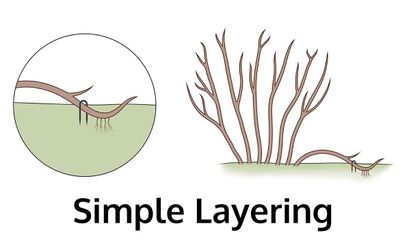Plant Layering Information
What is plant layering? Layering involves burying or covering a part of a stem to create a new plant. When looking for plant layering information, you’ll find five basic techniques to try, depending on the type of plant you want to propagate. Simple layering – Simple layering is done by bending a stem until the middle touches the soil. Push the center of the stem underground and hold it in place with a U-shaped pin. Roots will form along the part of the stem that’s underground. Tip layering – Tip layering works by pushing the very tip or point of a stem underground and holding it in place with a pin.
Serpentine layering – Serpentine layering works for long, flexible branches. Push a portion of the stem underground and pin it. Weave the stem above the soil, then back down again. This method gives you two plants instead of just one. Mound layering – Mound layering is used for heavy-stemmed shrubs and trees. Clip the main stem down to the ground and cover it. The buds at the end of the stem will form into a number of rooted branches. Air layering – Air layering is done by peeling the bark from the middle of a branch and covering this exposed wood with moss and plastic wrap. Roots will form inside the moss, and you can cut the rooted tip from the plant.
What Plants Can Be Propagated by Layering?
What plants can be propagated by layering? Any bushes or shrubs with flexible stems such as:
Forsythia Holly Raspberries Blackberries Azalea
Woody plants that lose their leaves along the stem, like rubber trees, and even vine plants such as philodendron can all be propagated via layering.





